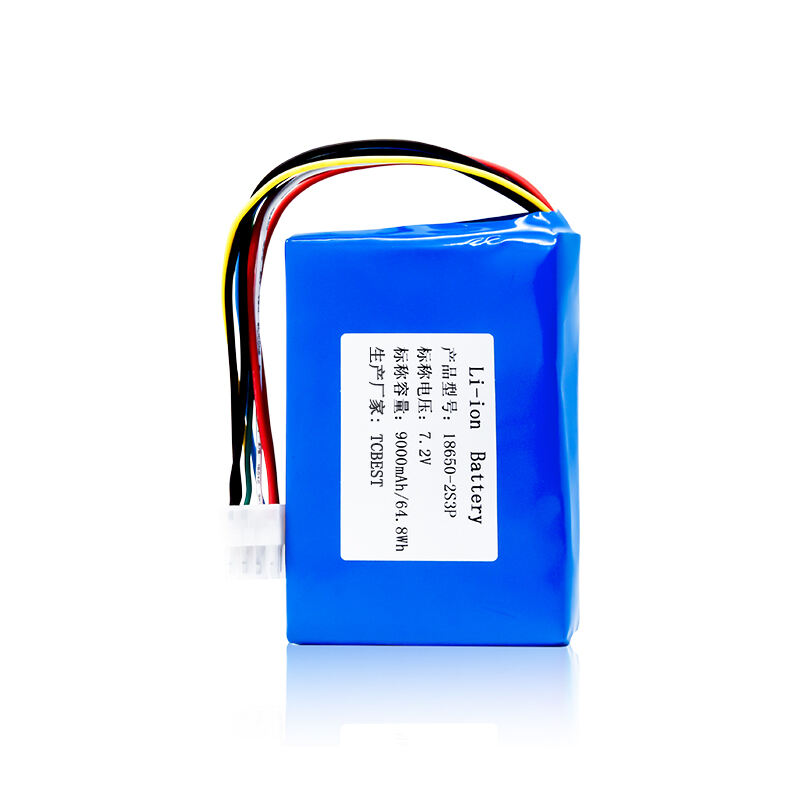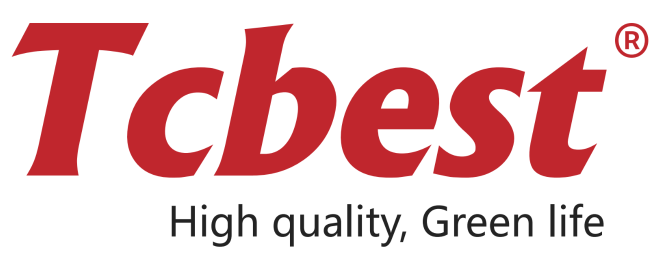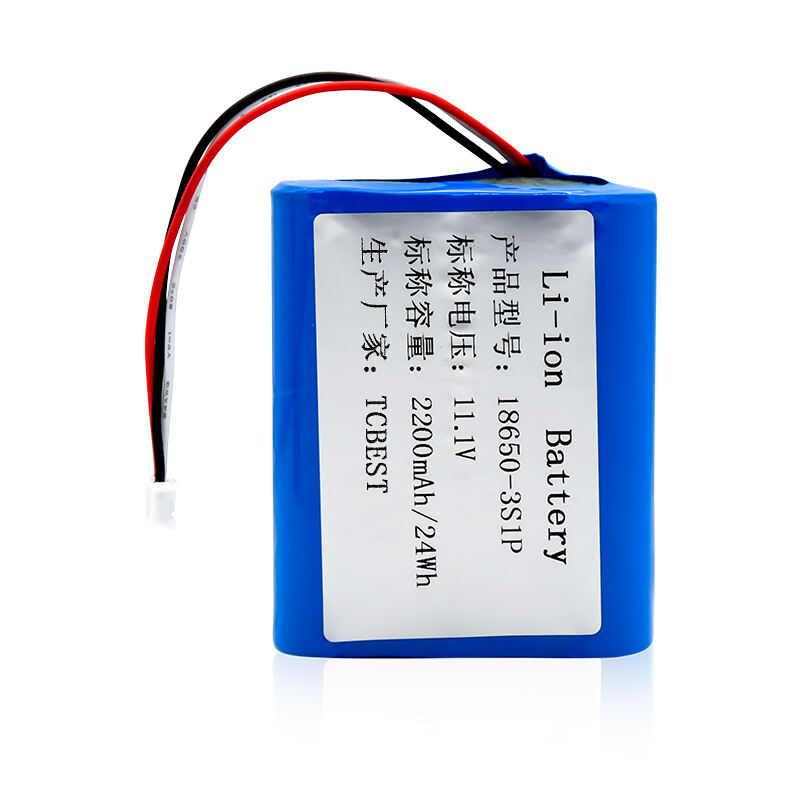Understanding Modern Energy Storage Solutions
The evolution of portable power has led to an ongoing debate in the energy storage industry about the merits of different battery packs. As devices become more sophisticated and power-hungry, the choice between lithium-ion and nickel-metal hydride (NiMH) battery packs has become increasingly significant for both manufacturers and consumers. Each technology brings its own set of characteristics that can make it more suitable for specific applications.
The growing demand for reliable and efficient battery packs has pushed both technologies to improve continuously. While lithium-ion has emerged as a dominant force in recent years, NiMH continues to maintain its relevance in certain applications. Understanding the key differences between these technologies is crucial for making informed decisions about power storage solutions.
Core Technical Differences Between Li-ion and NiMH
Energy Density and Power Output
Lithium-ion battery packs generally offer superior energy density, typically storing 150-200 watt-hours per kilogram, compared to NiMH's 60-120 watt-hours per kilogram. This significant difference means lithium-ion packs can store more energy in a smaller, lighter package. For portable devices and electric vehicles, this translates to longer runtime and reduced weight.
The power output capabilities also differ substantially between these technologies. Lithium-ion battery packs can deliver higher discharge rates while maintaining stable voltage levels throughout the discharge cycle. NiMH packs, while capable of high discharge rates, tend to experience more voltage sag under heavy loads.
Charging Characteristics and Efficiency
The charging process represents another key differentiation point between these technologies. Lithium-ion battery packs typically achieve full charge in 2-4 hours, while NiMH packs often require 4-6 hours. Additionally, lithium-ion charging efficiency can reach 95-98%, whereas NiMH typically achieves 65-70% efficiency.
Modern lithium-ion packs also benefit from more sophisticated charging management systems, which help prevent overcharging and extend battery life. NiMH charging systems, while simpler, must contend with higher heat generation and potential memory effect issues.

Longevity and Maintenance Considerations
Cycle Life and Degradation Patterns
Lithium-ion battery packs typically offer 500-1500 complete charge cycles while maintaining 80% of their original capacity. NiMH packs generally provide 300-500 cycles before significant capacity loss occurs. However, actual longevity depends heavily on usage patterns and environmental conditions.
The degradation patterns differ as well. Lithium-ion packs tend to show gradual capacity loss over time, while NiMH packs might experience more sudden drops in performance. Understanding these patterns is crucial for maintenance planning and replacement scheduling.
Storage and Temperature Sensitivity
Storage conditions significantly impact battery pack performance and lifespan. Lithium-ion battery packs prefer cool environments and maintain charge better during storage, losing roughly 2-3% per month. NiMH packs can lose 15-20% of their charge monthly at room temperature.
Temperature sensitivity also varies between the technologies. Lithium-ion performs better in cold conditions but requires protection from extreme heat. NiMH shows more resilience to temperature variations but may suffer reduced capacity in cold environments.
Environmental and Economic Impact
Manufacturing and Recycling Considerations
The production of battery packs involves different environmental considerations for each technology. Lithium-ion manufacturing currently requires more energy and specialized materials, though economies of scale are improving efficiency. NiMH production processes are well-established but still involve significant resource consumption.
Recycling infrastructure for both technologies continues to evolve. Lithium-ion recycling is becoming more efficient as volume increases, while NiMH recycling benefits from established processes. The recovery of valuable materials from both types of battery packs is crucial for sustainability.
Cost Analysis and Market Trends
Initial costs for lithium-ion battery packs have decreased significantly in recent years, though they typically remain higher than NiMH alternatives. However, when considering total cost of ownership, including longer lifespan and higher efficiency, lithium-ion often proves more economical in the long term.
Market trends indicate continued investment in lithium-ion technology, driving further improvements in performance and cost reduction. While NiMH maintains specific market niches, the broader trend favors lithium-ion solutions for most applications.
Future Developments and Innovations
Emerging Technologies and Improvements
Research continues to enhance both battery pack technologies. Lithium-ion improvements focus on higher energy density, faster charging, and enhanced safety features. New electrode materials and electrolyte compositions promise significant advances in coming years.
While NiMH development has slowed, innovations in manufacturing processes and materials science offer potential for improved performance and reduced costs. These developments could help maintain NiMH's relevance in specific applications.
Integration with Smart Systems
Modern battery packs increasingly incorporate smart management systems. Lithium-ion solutions particularly benefit from sophisticated monitoring and control capabilities, enabling optimal performance and extended lifespan. These systems provide real-time data on battery health and performance.
The integration of battery packs with renewable energy systems and smart grids represents another frontier of development. Both technologies play roles in energy storage solutions, though lithium-ion's characteristics make it particularly suitable for grid-scale applications.
Frequently Asked Questions
How long do lithium-ion battery packs typically last compared to NiMH?
Lithium-ion battery packs typically last 3-5 years or 500-1500 cycles, while NiMH packs generally last 2-3 years or 300-500 cycles under normal use conditions. However, actual lifespan varies significantly based on usage patterns, charging habits, and environmental factors.
Are lithium-ion battery packs safe for all applications?
While lithium-ion battery packs are generally safe, they require proper management systems and protection circuits to prevent overcharging and thermal runaway. They're suitable for most applications when properly designed and manufactured with appropriate safety features.
Can NiMH and lithium-ion battery packs be used interchangeably?
NiMH and lithium-ion battery packs typically cannot be used interchangeably due to differences in voltage characteristics, charging requirements, and form factors. Equipment must be specifically designed for the intended battery technology to ensure proper operation and safety.

